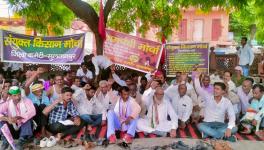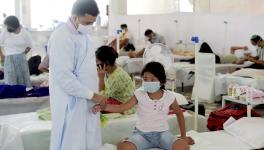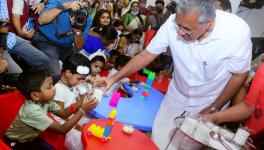Children’s Health in Northeast States
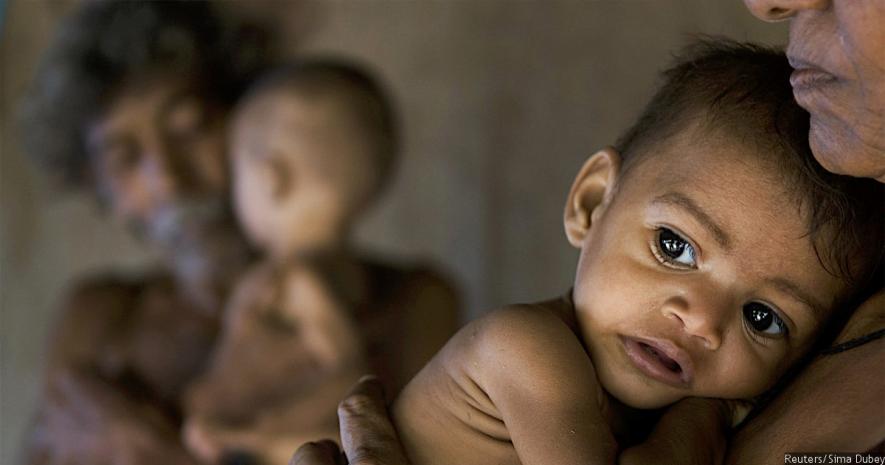
Eight North-Eastern states of India present an intriguing trend in child mortality, care and health outcomes as revealed in the recently published final report of the National Family and Health Survey 4 (NFHS 4). It was conducted across the country in 2015-2016 and gives details on a host of parameters ranging from mother and child health and mortality, access and use of healthcare services, etc. Newsclick analysed how the Northeast compares to the average for India, in an attempt to find out how ‘backward’ the region is – or not - in terms of mother and child health.
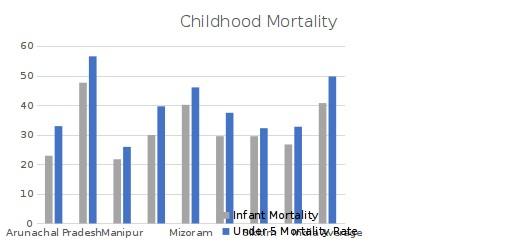
Infant mortality rate is defined as the number of children between the ages of 0 – 12 months dying per 1000 live births. The under five mortality rate is the number of children between the ages of 0 – 5 years dying per 1000 live births. As per the NFHS-4 data, overall the Northeast has an infant mortality rate and under five mortality rate lower than the Indian average, with the exception of Assam. One factor that seems to be affecting the under five mortality rate is the location of residence. It is higher in rural areas than in urban areas. Obviously this has to do with both poverty and availability of healthcare services. Another interesting feature is that the U-5 mortality rate decreases with an increase in the mother’s years of schooling. As expected, the rate decreases with an increase in household wealth.
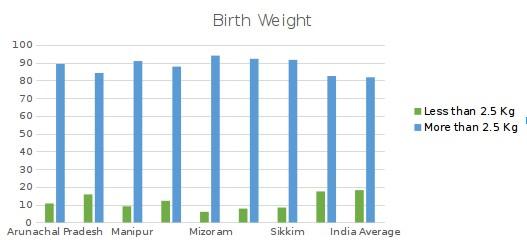
Birth weight is the weight of the child at the time of birth. It is a measure of the newborn’s health. The benchmark weight is 2.5 kilograms or above which is considered healthy. It is also a measure of the mother’s health. Since newborns will be weighed when they are born in institutional settings – hospitals or other health centres - the statewide records will depend on statewide institutional deliveries.
Overall birth weight in the Northeast tends to be higher than the Indian average. This includes Assam even though the infant mortality rate as well as the under five mortality rate inn Assam is higher than the Indian average.
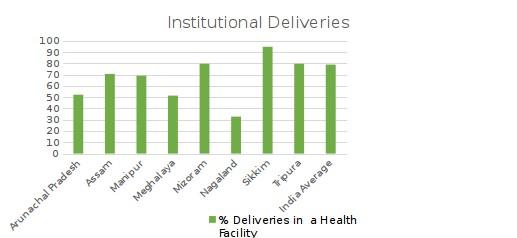
Institutional deliveries indicate the access to neonatal as well as post natal health care. Except for Mizoram, Sikkim, and Tripura, share of institutional deliveries in other states was less than the Indian average. That Assam also had a lower percentage of deliveries in a health facility, may explain the higher infant mortality as well as under five mortality rate. Arunachal Pradesh on the other hand had fewer institutional deliveries than Assam, and at the same time had a lower infant mortality rate as well as a lower under five mortality rate.
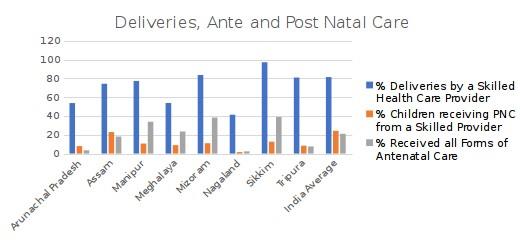
While Mizoram and Sikkim had a higher percentage of deliveries by a Skilled Healthcare Provider compared to the Indian average, no state had a percentage of children receiving postnatal care higher than the Indian average. However, Manipur, Meghalaya, Mizoram and Sikkim had higher levels of antenatal care than the Indian average. The explanation for lower levels of postnatal care provided by healthcare providers may lie in the fact that traditional forms of neonatal care are still preferred over those provided by healthcare professionals.
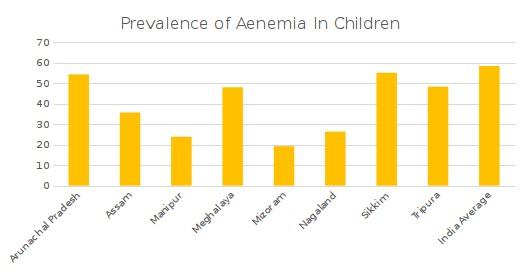
Overall the Northeast has a lower prevalence of aenemia in children compared to the Indian average.
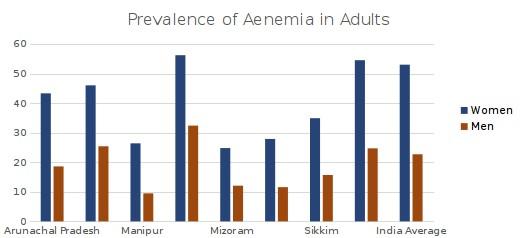
NFHS-4 shows that in adults, aenemia is more prevalent among women than men. The Northeast also follows this trend. Meghalaya and Tripura had a higher prevalence of aenemia among women as compared to the Indian Average. While Assam, Meghalaya and Tripura had a higher prevalence of aenemia in men as compared to the Indian Average. The prevalence of aenemia in both children and adults may be linked more to social factors than to economic factors as in Northeastern states, forest produce forms a part of the local diet. It is possible that with changing attitudes towards food in the form of beetles and other traditional sources of nutrition has resulted in lower consumption of nutritious food. This can be seen in Sikkim where the prevalence of aenemia is higher in children than in adults. It is possible that the changing attitudes towards food are due to the influence of media and the promotion of ‘processed’ foods through advertisements, over home cooked meals.
Get the latest reports & analysis with people's perspective on Protests, movements & deep analytical videos, discussions of the current affairs in your Telegram app. Subscribe to NewsClick's Telegram channel & get Real-Time updates on stories, as they get published on our website.












